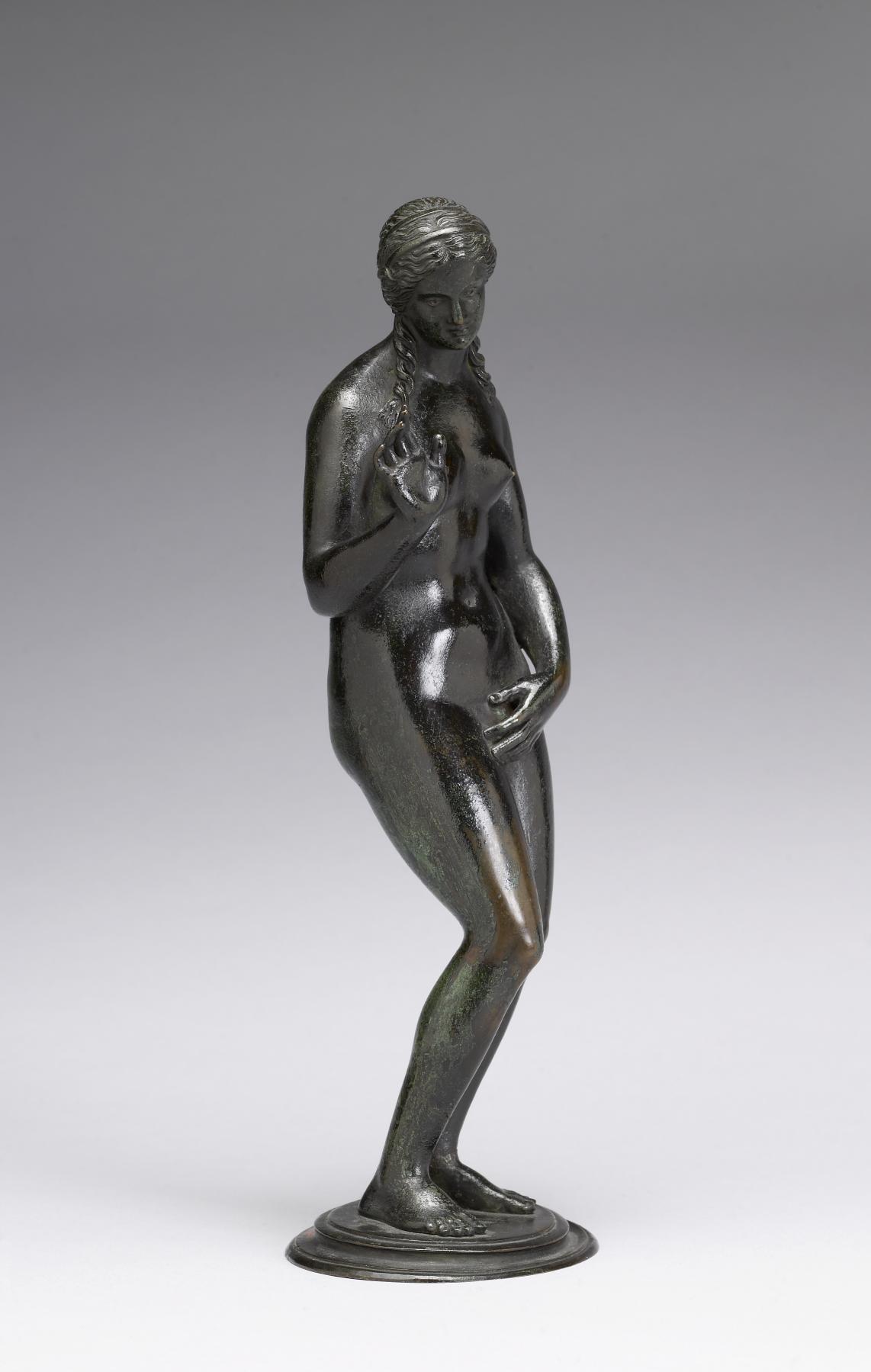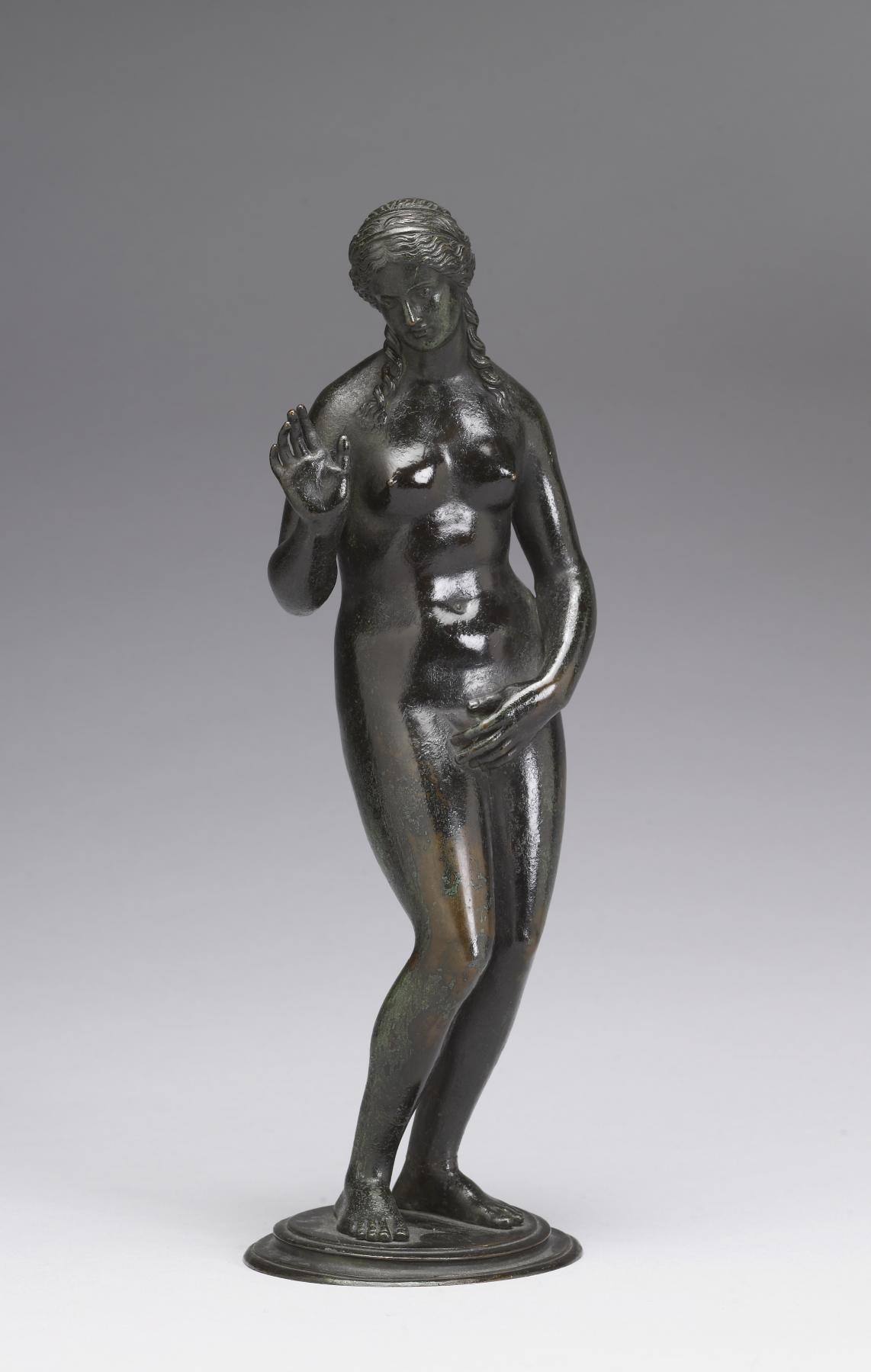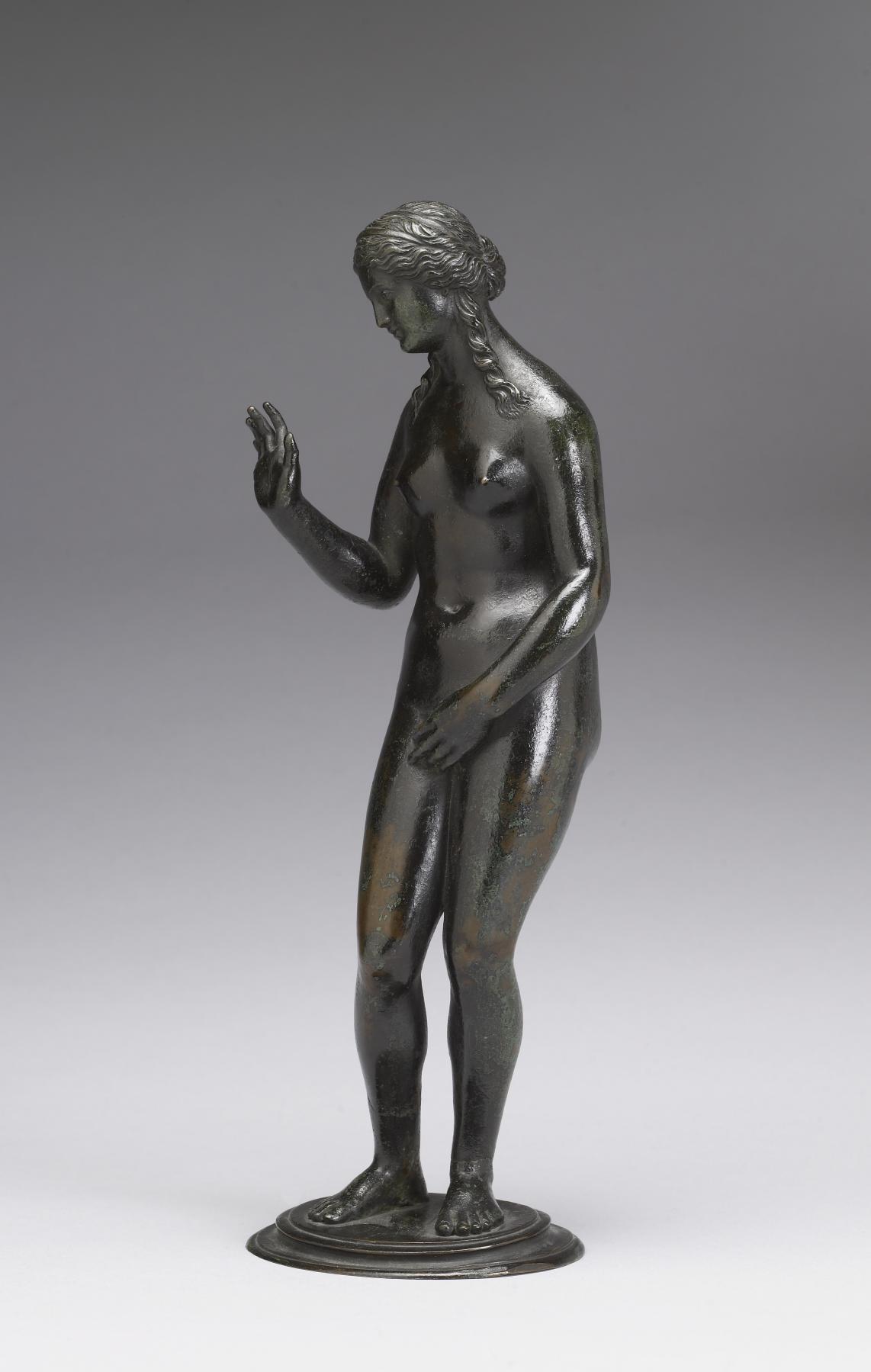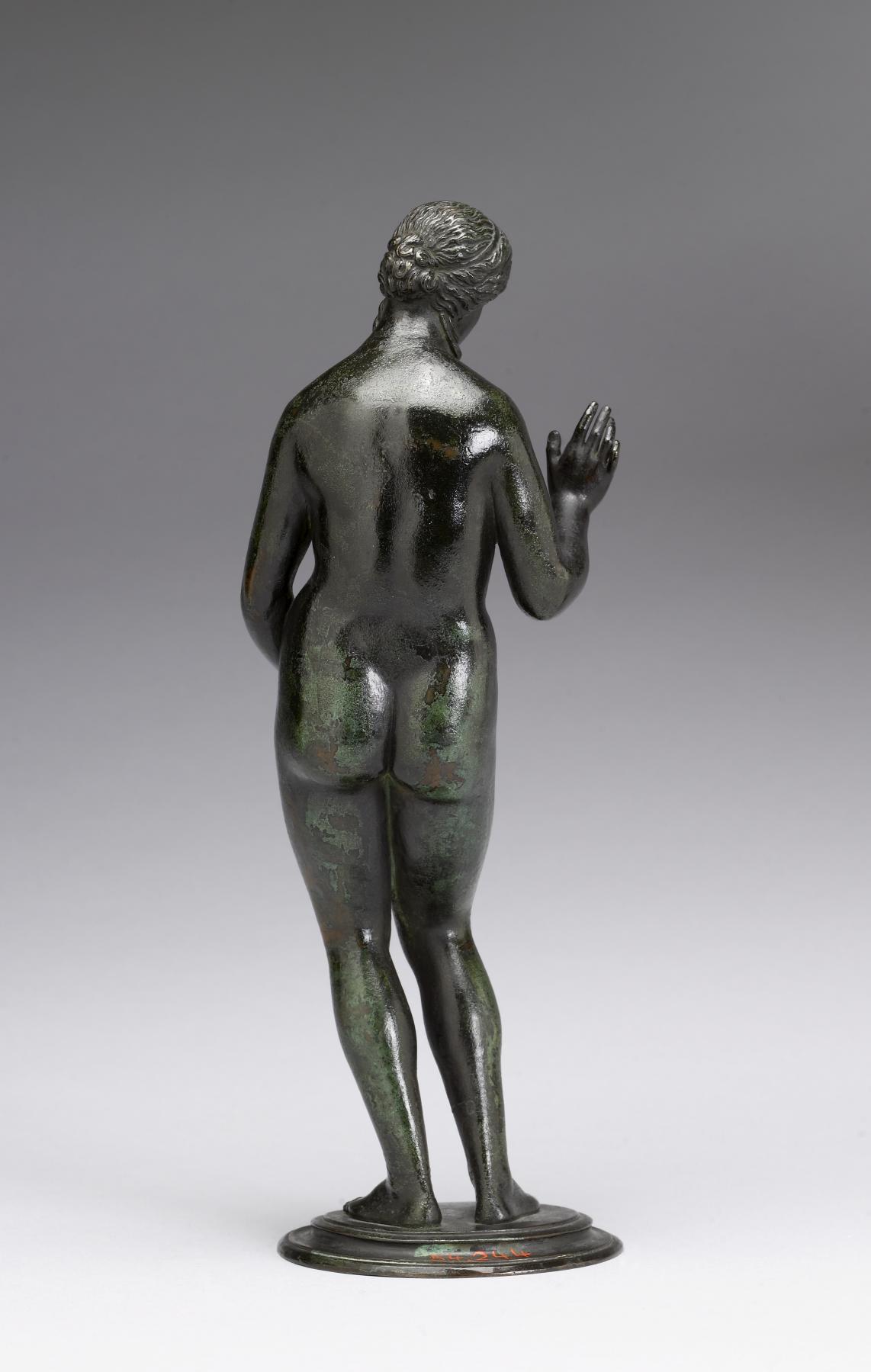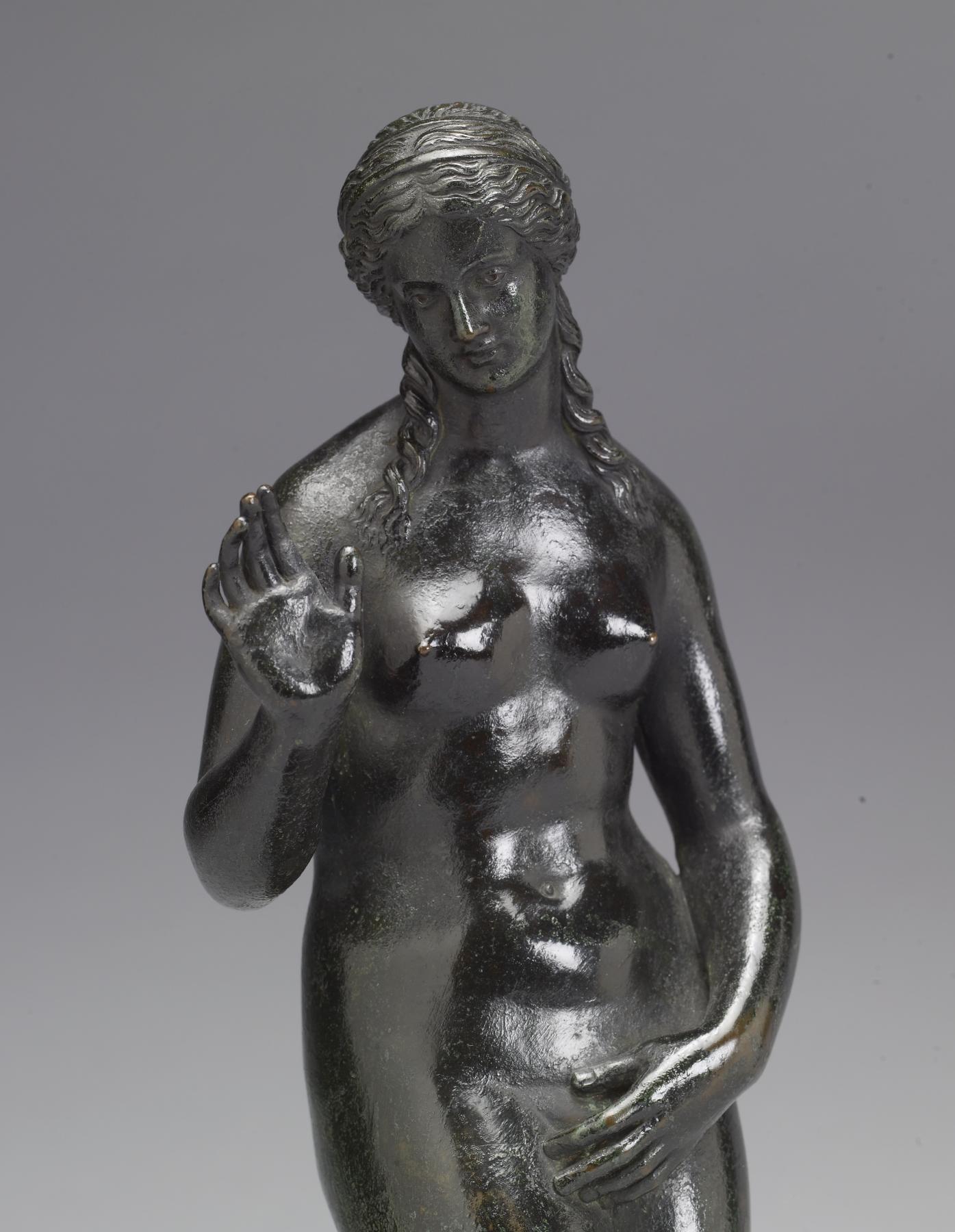Modest Venus (Venus Pudica)
(Renaissance Europe )
This Venus, with her legs close together and a hand covering her genital area, is a "Venus Pudica," modest or chaste Venus. Her gesture implies awareness of an unexpected gaze: the viewer's.
A nearly identical statuette (in the Basel Historisches Museum, Switzerland) was owned by the collector Basilius Amerbach (1533-91), who believed the statuette to be ancient. Both statuettes have silver-inlaid eyes, a feature copied from antique bronzes, as are Venus's corkscrew curls. The pose is derived from a much-studied ancient torso in a Roman collection. It is possible that these statuettes were created as "antiques," for which there was great demand.
Provenance
Provenance (from the French provenir, 'to come from/forth') is the chronology of the ownership, custody, or location of a historical object. Learn more about provenance at the Walters.
Henry Walters, Baltimore, 1904 [mode of acquisition unknown]; Walters Art Museum, 1931, by bequest.
Exhibitions
| 2012 | Touch and the Enjoyment of Sculpture: Exploring the Appeal of Renaissance Statuettes. The Walters Art Museum, Baltimore. |
Geographies
Italy, Padua
(Place of Origin)
Italy, Venice (Place of Origin)
Measurements
H: 10 1/2 in. (26.7 cm)
Credit Line
Acquired by Henry Walters, 1904
Location in Museum
Accession Number
In libraries, galleries, museums, and archives, an accession number is a unique identifier assigned to each object in the collection.
In libraries, galleries, museums, and archives, an accession number is a unique identifier assigned to each object in the collection.
54.244

